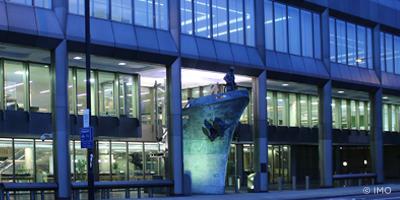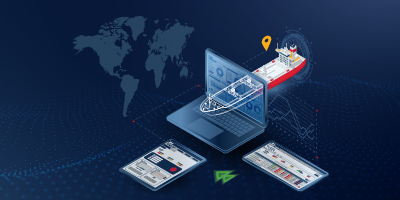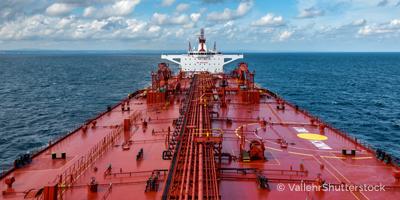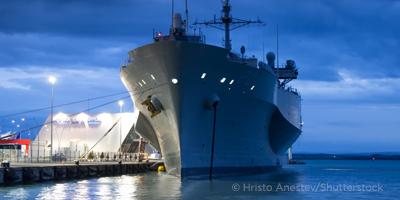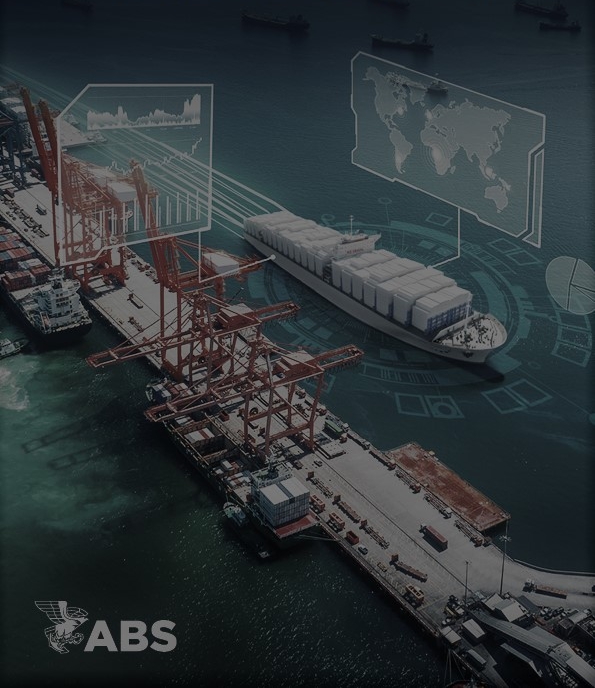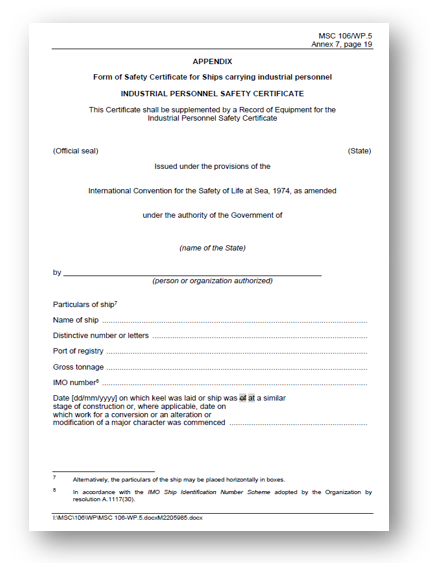What is the difference between industrial personnel and special personnel?
Industrial personnel are any persons who are transported or accommodated on board for the purpose of offshore industrial activities performed on board other ships and/or offshore facilities. [IP Code reg. III/ 2.4]
On the other hand, special personnel are considered persons who are not passengers or members of the crew or children under one year of age and who are carried on board in connection with the special purpose of that ship or because of special work being carried out aboard that ship. [SPS Code reg. 1.3.11]
What distinguishes the IP Code from the SPS Code?
For cargo ships, the IP Code is largely based on the Code of Safety for Special Purpose Ships (2008 SPS Code), with a few additions and alterations. For high-speed craft, the IP Code is based on the IMO HSC Code.
The IP Code is made mandatory through the new Chapter XV in the SOLAS Convention. The key difference between industrial personnel and special personnel is:
- Special personnel work on board the ship in connection with the “special purpose” of the ship or because of special work being carried out on board the ship
- Industrial personnel are merely transported by or accommodated on the ship and do not work on board the ship
Existing SPS Code ships are particularly impacted by the aggregation of passengers, special personnel and industrial personnel in the IP Code.
If a ship complies with the non-mandatory Code of Safety for Special Purpose Ships (2008 SPS Code), the requirements may not be sufficient to address all personnel transfer risks, and the IP Code comes into force requiring the Industrial Personnel Safety certificate, when:
- More than 12 persons are either carried on board solely for the transport and/or accommodation in order to be transferred over to another installation or vessel where they will work, or
- If only one Industrial Personnel is carried and the sum of industrial personnel, special personnel and passengers is more than 12
What is the requirements comparison between the IP and SPS Codes
The IP Code has more requirements than SPS Code for the same number of persons carried onboard. These requirements relate to personnel transfer risks from design, operational and training perspectives.
Will an IP Code certificate be enough to transport special personnel on board the ship?
The new IP Code is designed to facilitate the transportation of industrial personnel. In the new SOLAS Chapter XV and the IP Code, the aggregate number of industrial personnel, special personnel and passengers on board shall be considered, with the passenger count not exceeding 12.
Here are examples of combinations for SOLAS ships carrying industrial personnel, special personnel and passengers and the expected compliance to the applicable codes.
For case No. 1 with 13 industrial personnel on board, the IP Code will be applicable.
For case No. 2, with no industrial personnel on board but with 13 special personnel on board, the SPS Code will be applicable.
For case No. 3 with one industrial personnel and 12 special personnel on board, the IP Code will be applicable. Where the number of industrial personnel is referred to under IP Code, the aggregate number of industrial personnel, special personnel and passengers are to be considered, which in this case will be 13 in aggregate.
Similarly, for case No. 4, there is only one industrial personnel, but the aggregate number exceeds 12.
For case Nos. 7 and 8, the ships are carrying more than 12 passengers; therefore, they are required to comply with SOLAS passenger ship requirement.
For case Nos. 9 and 10, the ship carries more than 12 passengers and there are at least one industrial personnel. The ship will need to comply with SOLAS passenger ship requirement as minimum. Carriage of industrial personnel, if accepted, is subject to further instruction by flag Administration.
Will ships occasionally transporting more than 12 industrial personnel need both an SPS Code certificate and an IP Code certificate?
Following the implementation of SOLAS Chapter XV and the IP Code, any ship carrying more than 12 industrial personnel internationally must possess an IP Code certificate. Therefore, holding an SPS certificate alone is insufficient, as it fails to meet the requirements of SOLAS Chapter XV.
It is recommended to contact the relevant flag Administration.
Could ships that are certified according to the 2008 SPS Code qualify for an IP Code certificate under the grandfather provisions?
For existing ships that already carry more than 12 industrial personnel, flag Administrations may allow the continued accommodation of industrial personnel based on 2008 SPS Code or other equivalent standards that provide an equivalent level of safety, subject to approval by the administration as per Resolution MSC.418(97).
Will wind turbine installation vessels need to possess an IP Code certificate for installation?
All vessels transporting more than 12 industrial personnel on international voyages are required to hold an IP Code certificate. While the voluntary adoption of the new SOLAS Chapter XV in domestic waters is promoted, its implementation remains at the discretion of the relevant administration. In the case where a wind turbine installation vessel operates on international voyages, carries more than a combined total of 12 industrial personnel, special personnel and passengers, and exceeds 500 GT, it is to have an IP Code certificate.
When shall the Industrial Personnel Safety Certificate be issued?
Every ship to which this code applies shall have on board a valid Industrial Personnel Safety Certificate.
The Industrial Personnel Safety Certificate shall be issued after an initial or renewal survey to a ship which complies with the requirements of the IP Code either by the Administration or by an organization recognized by it in accordance with SOLAS regulation XI-1/1.
The Industrial Personnel Safety Certificate validity, survey dates and endorsements shall be harmonized with the relevant SOLAS certificates in accordance with the provisions of SOLAS regulation I/14 or SOLAS regulation X/3.2. The certificate shall include a supplement recording equipment required by the IP Code.
When developing the appropriate design, which considerations should be given to transfer arrangements?
In order to meet the functional requirement in paragraph II/2.2.2, personnel transfer arrangements shall be designed, constructed, tested and installed in accordance with standards acceptable to the Administration or the requirements of a classification society recognized by the Administration in accordance with the provisions of SOLAS regulation XI-1/1.
What are the relevant references?
More information can be found on the following:
ABS:
Other References:
- IMO Res. MSC.521(106) – SOLAS Amendments containing new Chapter XV
- IMO Res. MSC.527(106) – IP Code
- IMO Res. MSC.418(97) – Interim Recommendations on the Safe Carriage of more than 12 IP on board Vessels engaged on International Voyages
- IMO Res. MSC.266(84) – SPS Code
- MSC-MEPC.7/Circ. 10 – Guidance on Safety when Transferring Persons at Sea
- IMCA SEL 025, IMCA M202 Guidance on the Transfer of Personnel to/from Offshore Vessels and Structures
- EN 13852-1:2013 – Cranes – Offshore Cranes – Part 1 General-Purpose Offshore Cranes




